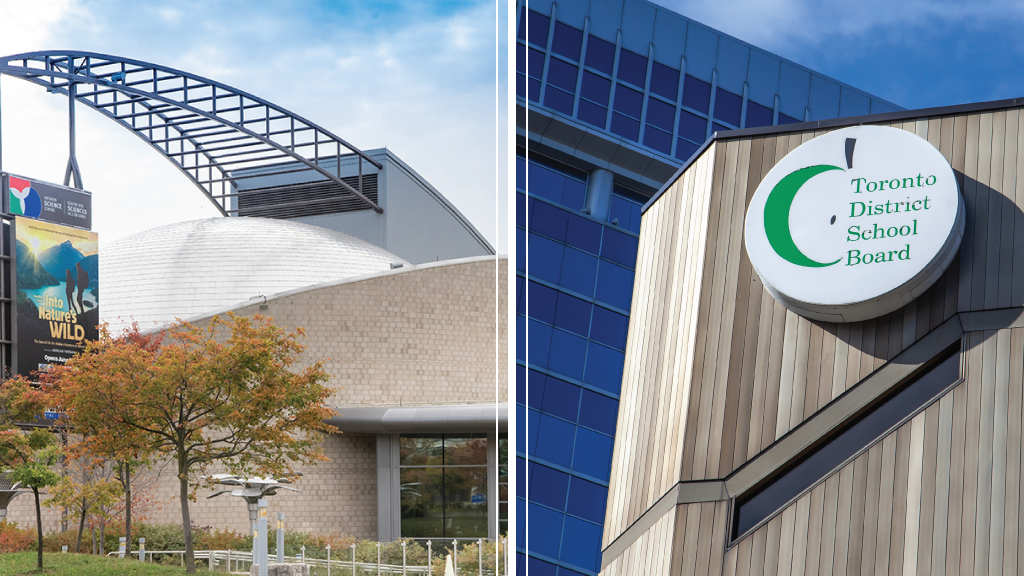The corroded and weakened Reinforced Autoclaved Aerated Concrete (RAAC) roofing panels found at the Ontario Science Centre (OSC) which prompted its closure on safety grounds are also a problem in 366 Toronto area schools.
The focus is now on the lightweight cementitious panel Domtar product marketed from about 1950 to 1990 called Siporex, which involved a concrete mix that was aerated and baked into panels of varying length and width with steel reinforcement inside.
The product was widely used in Ontario in that period, especially in public buildings for fire safety ratings and flexibility. Other versions of RAAC roof panels have been used since the 1920s internationally.
The questions now focus on what went wrong, says University of Waterloo Prof. John Straube.
An associate professor jointly appointed to the department of civil and environmental engineering and the school of architecture, Straube teaches and researches building science, building materials and engineering design. He also leads forensic investigations both in North America and internationally.
A ‘widely used and abused product’
“I’m not a fan of the product,” he says bluntly. “First, people treat it like cement and it is not cement. It’s more like waxed cardboard.”
He says the product disappeared from the market around the 1990s when problems from the initial installation from 1950 started to surface.
“Why were people so obsessed with a widely used and abused product that was problematic if not maintained?” he says. “Maintenance isn’t glorious, so it gets put off.”
Installation is also critical and the product must be protected from water vapour or water which it tends to soak up, he says.
Regular inspection and remediation is critical.
The Ontario experience mirrors the U.K. situation where more than 100 schools and public buildings with RAAC panels have been flagged for decay.
“The issues are this: Was it a design error, a manufacturing problem, an installation or a maintenance problem?” he says. “Even if they had gone with wood and OSB roof and not maintained it, it would have fallen down.”
The fact is, he says, that RAAC absorbs moisture and that leads to problems. That’s reflected in the Rimkus engineering report which shows degradation in 16 per cent of the roof panels examined in three OSC buildings which were rated as critical or high risk. The engineers were unable to inspect all the panels but did manage to check the majority in the three OSC buildings.
In some cases spalling and other damage was apparent and the engineering report recommended closing the OSC by October because snow load could trigger a roof collapse.
Architecture firm calls decision to close OSC ‘rash’
The decision by the Doug Ford government to close the facility has triggered a hailstorm of controversy with some demanding the roof be repaired regardless of cost.
Infrastructure Ontario says their reading of the Rimkus report estimates it would cost up to $40 million and two years of work while the OSC is closed. That is in addition to the cumulative $369 million in back maintenance required on other parts of the three buildings. They are currently looking for a new location to house the exhibits.
However, the OSC itself, perhaps with a heads up from the Rimkus engineers onsite, applied for a City of Toronto building permit to replace sections of roof with steel and membrane in May.
To effect this, however, the OSC would have to be closed for the duration of construction repairs. The government opted to act immediately.
The OSC was designed by Toronto architect Raymond Moriyama in 1968-69, who noted shortly before his death in 2023 when it was first announced the OSC would move to a waterfront location, that he was tasked “with using concrete to last far beyond 100 years. We guaranteed that with proper maintenance the life of this project will last far beyond 250 years.”
Since then the Royal Institute of British Architects has warned RAAC roof panels only have a lifecycle of 30 years.
The Ontario Ministry of Education has also warned schools, based on the U.K. experience, with pre-1980 construction with RAAC panels are past their life cycle and should be replaced.
Meanwhile, some Toronto entrepreneurs have come forward to offer up to $1.5 million towards repairs at the OSC to preserve it in the current location and try to keep it open this summer.
The firm of Moriyama Teshima Architects says it will offer pro bono design services to facilitate any repairs to preserve the OSC in its current location.
It called the government decision to close the OSC “rash,” arguing preserving it would reduce the carbon footprint of a new structure by a factor of seven.
“The Rimkus engineering report makes it clear that closing the OSC is not a necessity,” the firm said in a statement. “Repairs are needed but on a manageable scale with potentially minimal impact on the public experience in the building.”



Recent Comments
comments for this post are closed